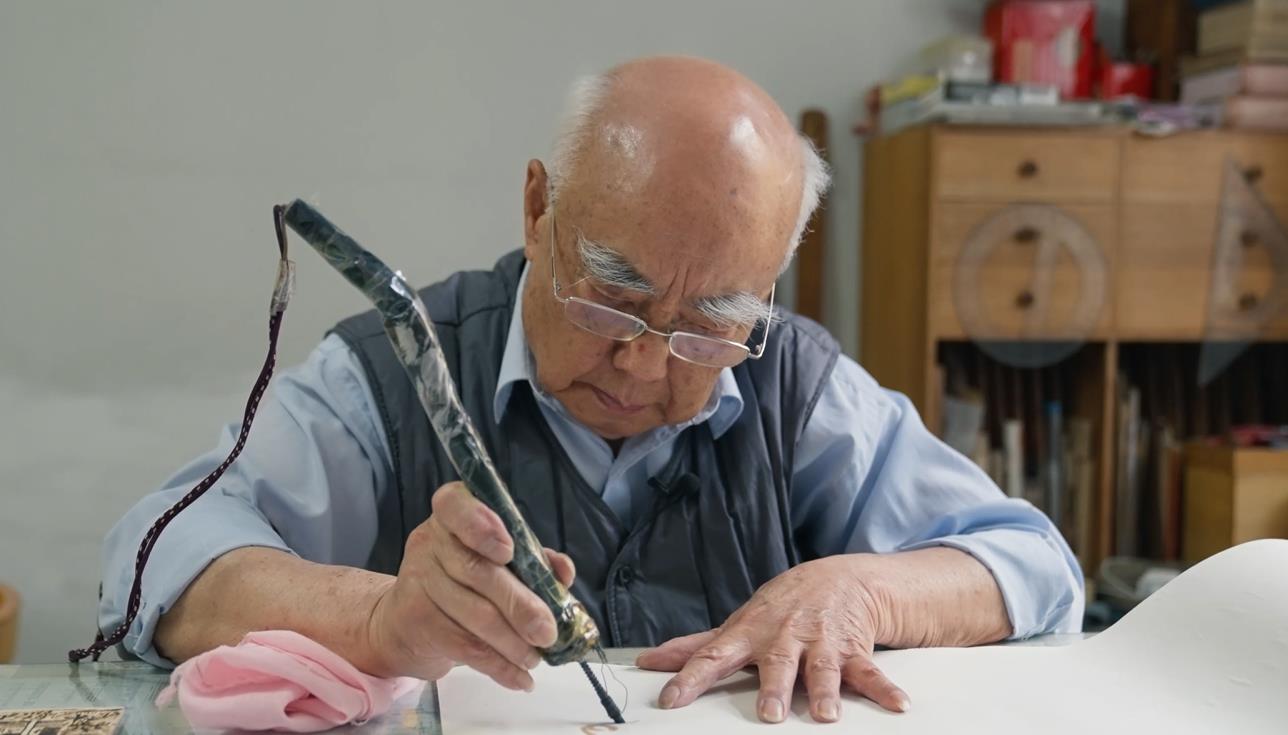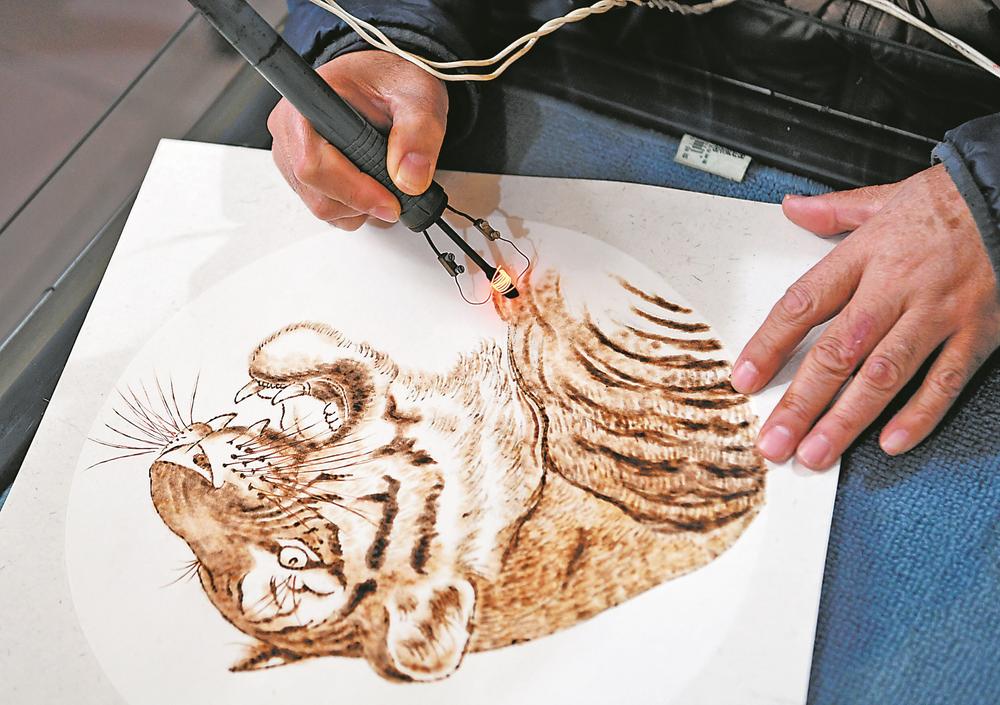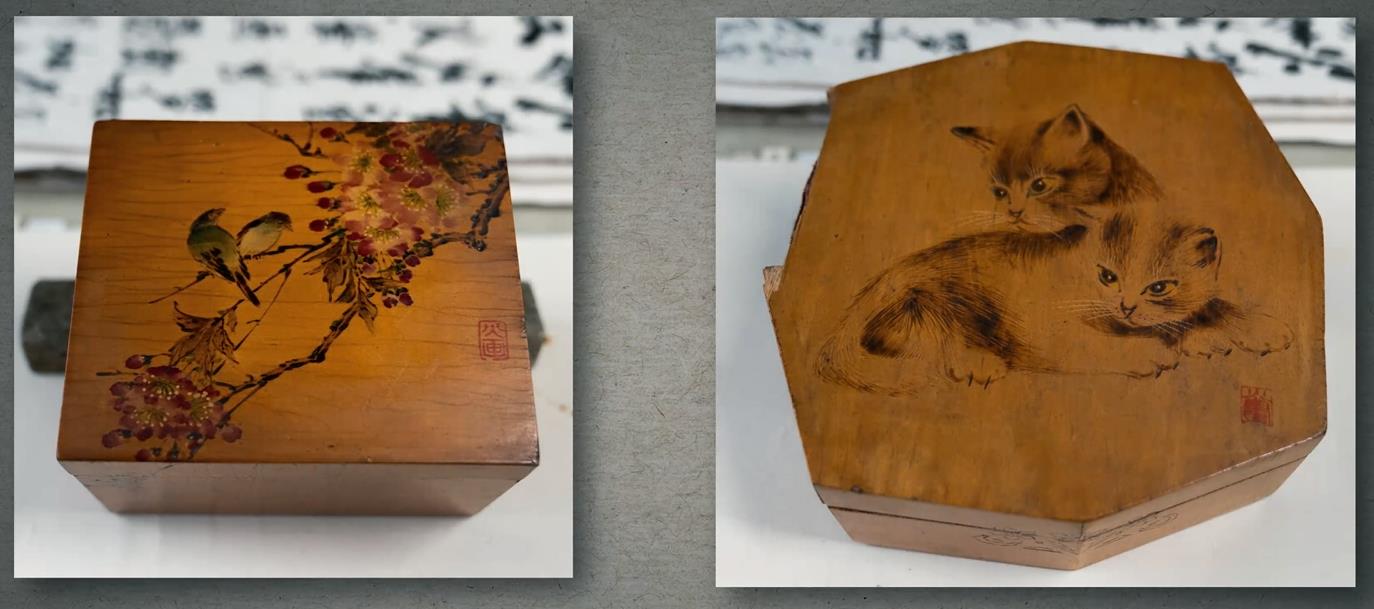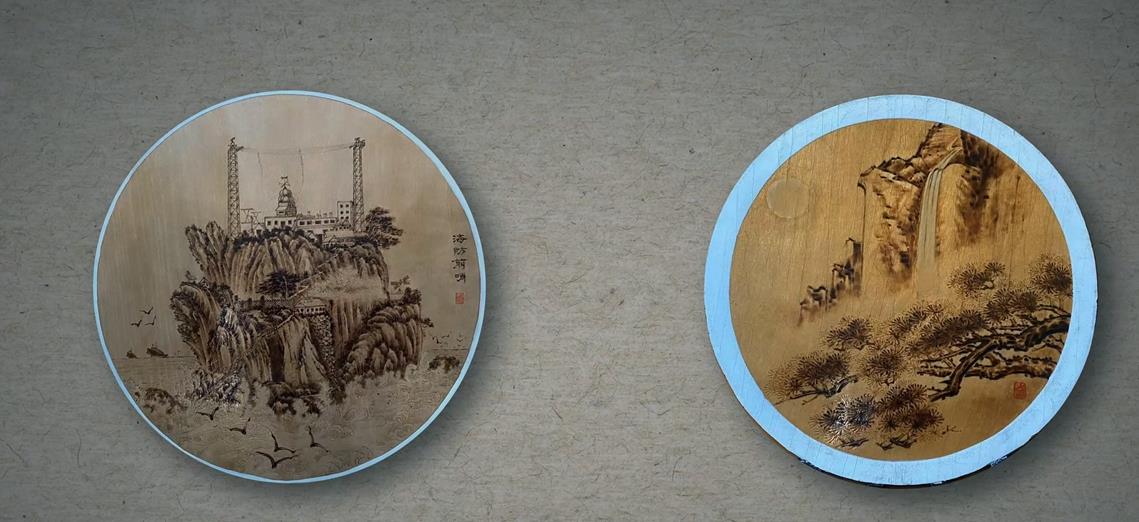|
huobi painting has included in the intangible cultural heritage projects of anhui province. liu kai is the third generation inheritor of this traditional skill. 
with soldering iron as pen, and burning wood as painting, huobi painting is originally called the pyrography, and it has passed down for thousands of years. it started from the western-han dynasty, and boomed in the eastern-han dynasty. pyrography was almost lost due to long-period wars. until the late ming and early qing dynasty, huobi painting began widespread among the people. 
huobi painting is characterized by using iron as pen, and fire as ink. artists adjust the temperature of electrocautery pen to draw paintings on various of boards, such as wood, bamboo, xuan paper and silk. liu zhuhua and liu kai are the representative artists of huobi painting, and their paintings are mainly focusing on huangshan mountains and beautiful scenery of hefei. the artworks are not only presenting the features of chinese painting, but also showing its unique plain and elegant quality. 
the brush of huobi painting has experienced three-time reformations. at the beginning, artists took heated iron pole for painting, following with carbon ball pen, and finally the brush was improved into a small and portable electric ironing pen. this kind of pen with electricity as fire has greatly improved the creation of huobi painting. 
one huobi painting should go through board selection, board trimming, polishing, drafting, finalisation, hot-stamping graphics, varnishing, and framing up. and the artworks have a variety of sizes with high artistic and collection value. 
entries:
1.huobi painting 2.provincial intangible cultural heritage project 3.liu kai 4.third generation inheritor 5.pyrography 6.originate from the western han dynasty 7.using iron as pens 8.using fire as ink 9.electric ironing pen 10.liu zhuhua 11.iron pole 12.carbon ball pen 13.board selection 14.board trimming 15.polishing 16.drafting 17.finalisation 18.hot-stamping graphics 19.varnishing 20.framing up
|